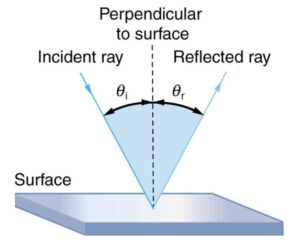

The angle of deviation decreases as the angle of incidence rises, and when it reaches a point where the angle of incidence equals the angle of emergence, the angle of deviation is at its minimum, and it will begin to decrease again.The angle of incidence can be calculated by using Snell's Law. The speed of light is slowed inside the denser medium, but there is no resistance to the speed of light from any rarer medium. This is due to the fundamental law of reflection of light-angle of incidence on a reflecting surface equals the angle of reflection. Denser mediums include glass, diamonds, and kerosene. The medium has a significant influence on the angle of incidence and refraction.Īir or any other type of gas is an example of a rarer medium. When compared to the speed of light in the denser medium, the rarer medium has a faster speed. The first is a more scarce medium, whereas the second is a denser medium. The ray of light makes contact with two different mediums. The angle of incident ray and angle of refracted ray Sunlight with a 90° incidence angle is absorbed, while light with a lower angle is reflected. The angle that is formed by a ray of sunlight colliding with a line perpendicular to a surface for example, a surface directly facing the sun has an angle of incidence of 0, whereas for a surface parallel to the sun (like rays of the sun striking a horizontal rooftop) has an angle of incidence as 90°.

The angle of incidence is 0, the wavefront is parallel to the surface, and the path of the ray is perpendicular, or normal, to the contact in normal incidence. by a low gate, whale bones in a backyard, chile roasting in a parking lot, or the memory of wrapping an exposed pipe, the sizzle when our tongues meet.

A line that is drawn perpendicular to the point of incidence is known as a normal.The incident ray hits the surface at a point known as point of incidence with a certain angle that is called the angle of incidence.The ray of light that first hits the surface to be reflected further is known as the incident ray.When a ray of light is reflected on a surface, it reflects back at an angle equal to the angle of incidence.
THE ANGLE OF INCIDENCE EQUALS THE ANGLE OF REFLECTION. PDF
Check out : pdf notes of Ray Optics and Optical Instruments


 0 kommentar(er)
0 kommentar(er)
